




He was born on 19 November 1922, the only son of Plinio and his wife Emilia, one of Lucca’s best-known milliners, who probably passed on the artistic vein to him.
After spending his childhood and adolescence in Lucca with the friends who would eventually become his lifelong friends, he pursued set design studies in Florence, where he eventually graduated. Elio discovered that his interests were different, being more creative than strictly technical, after taking over the family firm following the tragic death of his father Plinio.
As a result, he started working with a Lucca-based company to create interiors for public spaces. He started designing and making his own lamps for his projects because he was dissatisfied with the types of lighting fixtures that were readily accessible at the time (it was just after World War II). In a basement in Piazza Bernardini in Lucca, which was only accessible by a trapdoor and a stairway, and where the few tools required for a tiny production were installed with difficulty, Martinelli Luce was created. Elio referred to it as a ‘laboratory’. Many of his concepts were formed in this place.
Elio Martinelli was brave, as were those who had supported him. His coworkers and a buddy gave him the small loan he needed to launch his business because banks had turned him down for loans. Elio Martinelli and Martinelli Luce rose to prominence internationally after the first Eurodomus in Genoa in 1966 and the meeting with Giò Ponti. In 1949, he married Anna, his lifelong partner and creative inspiration.
Elio Martinelli created a lot of lights during his career and learned new methods for molding methacrylate to create some of them. The most iconic lights of his manufacture were created specifically in plastic during the 1960s, a time when inventive and ground-breaking plastic materials first began to appear.
Attention to technology and novelty has always characterised Elio Martinelli’s interest, not only in the materials in which the lamps were made, but also in the use of new light sources.
The classic light bulb, from the 1970s onwards, was increasingly replaced by halogen and metal halide lamps that led to a real revolution in the lighting of commercial spaces. It was in the early 1980s when Elio Martinelli designed his first technical fixtures collected in a specific catalogue called ‘Sistemi’.
He passed away on 21 October 2004 after an illness that had forced him in his last years to be often far away from that creature to which all his thoughts were directed.




Many describe him as a shy but charismatic man: Elio Martinelli was an innate designer, he knew how to see beyond things and people, he sensed with a single glance who was in front of him and for this reason he was able to win everyone over with words and gestures. His uncommon sensitivity allowed him to understand not only people but also the market, he rarely made mistakes, and for this reason he knew how to intuit and foresee what to produce.
Elio Martinelli had an idea in his head that was launched by a great architect and master to an Italy of many years ago: “Perhaps Italy is destined to clarify on which factors of modern life we must base ourselves in order to recover the sense of beauty”.
In these words that Gropius wrote in the introduction to the Italian edition, in 1959, of his essay Integrated Architecture, is the key to the whole story of Elio Martinelli, the beauty of authentic modernity, that which is grasped by a sensitive public that has become affectively attached to his lamps: there is no technological innovation that can stand comparison, when faced with an object that can express timeless beauty.
For this reason, Elio Martinelli differs from many architects and designers of his generation, although he was strongly influenced by the trends that developed between the two wars. Instinctively, Martinelli adhered to the tendency to do away with all superfluous decoration or ornamentation, favouring instead a predisposition to make form coincide with function. This talented designer had a rational vision that led to the identification of the useful with the beautiful, with the ambition (common to many in those post-war years) to satisfy man’s needs, avoiding unnecessary waste.
A perspective (as happened in his essential yet expressive scenographies) that referred to his personal vision of the object, which should certainly be functional but also communicative or innovative for the symbolic values it expressed. He was driven to become a designer by his desire to know and his curiosity for everything that was new in those years when everything had to be rebuilt - two characteristics that productly marked his path. He looked beyond Elio, he looked at what was happening in distant countries, he studied the formal simplification of Scandinavians such as Jacobsen and Wirkkala, who knew how to give ‘warmth’ to their creations both in the choice of materials and in the almost handcrafted appearance. He combined intuition with planning ability, which led him to exploit the expressive possibilities offered by the natural world, its shapes and structures, reproducing in his drawings some fundamental themes (the leaf, the snake, the cloud) that would recur in all his later production, in different versions: from the graphic sign to the functional object, from paintings to stage sets, from design to interior design. These were the years in which Elio Martinelli’s universe took a concrete form, the one that was to characterise him for the rest of his life.

“Designing by looking out of the window. Nature as a source of inspiration.”


“Creating objects for everyone, capable of resisting fashion. Form and function, essentiality, research, nature and geometry.”

She was born in Palazzolo della Stella (Udine) in 1927. After graduating from the Politecnico di Milano in 1953, her training took place between Florence and Turin, but it was in Milan that she pursued her professional career in various sectors: architectural design, interior and industrial design, and theatre set design.
From 1955 to 1965 he was on the editorial staff of Casabella-Continuità directed by Ernesto Rogers, which laid the foundations for his professional identity.
After the realisation in Paris of the Museé d’Orsay (1980-86) and the new layout of the Musée National d’Art Moderne at the Centre Pompidou (1982-85), he supervised the renovation of Palazzo Grassi in Venice (1985-86) and, subsequently, the setting up in this venue of numerous temporary exhibitions, from ‘Futurismo & Futurismi’ (1986) to ‘Da Puvis de Chavannes a Matisse e Picasso. Towards Modern Art’ (2002).
Numerous industrial design products were created to complement the architectural project, one example being the iconic Pipistrello lamp, designed in 1965 for the Olivetti shops in Paris and Buenos Aires. Read more about the history of Pipistrello.
In January 2005, he founded Gae Aulenti Architetti Associati. On 31 October 2012, Aulenti died at her home in Milan. This was fifteen days, after her last public appearance when she received the gold medal for Lifetime Achievement at the Trienniale Milano.
“A product is never merely and exclusively decorative but is a complement to the architectural space in which it is inserted.”

“Architecture
is a man’s profession, but I always pretended not to know that.”





“We work with three things: spaces, light—especially during the day but also at night—and architecture. Then there is light as design, as a tool for architectural clarification and light as an integrated functional fact, as in museums, where it is part of the design, not only of desire, but of necessity.”
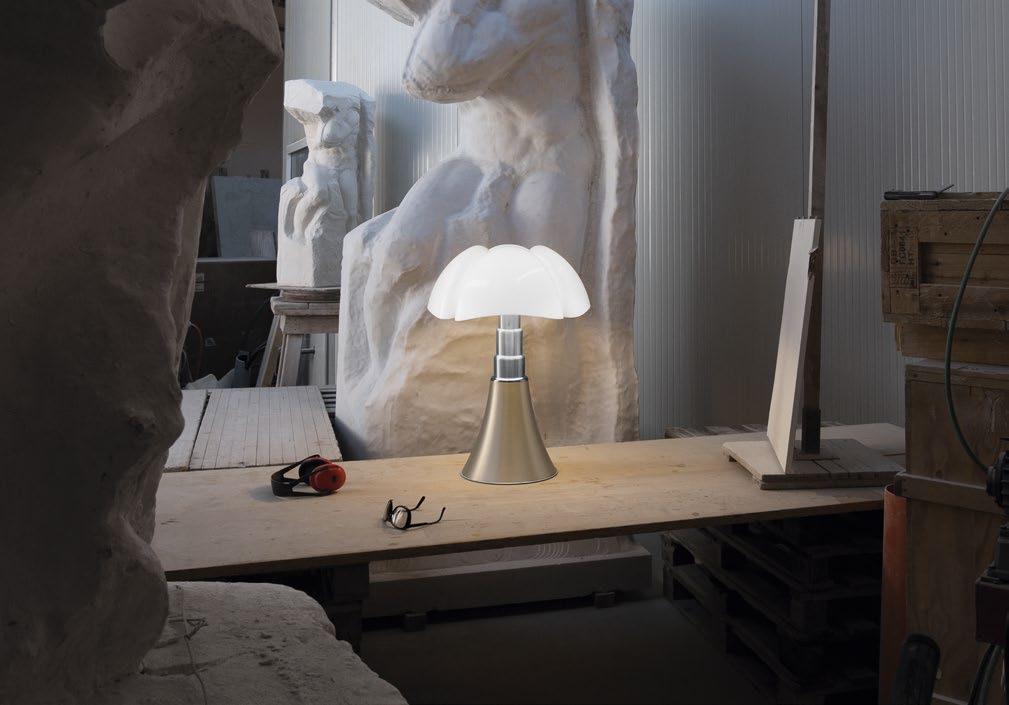



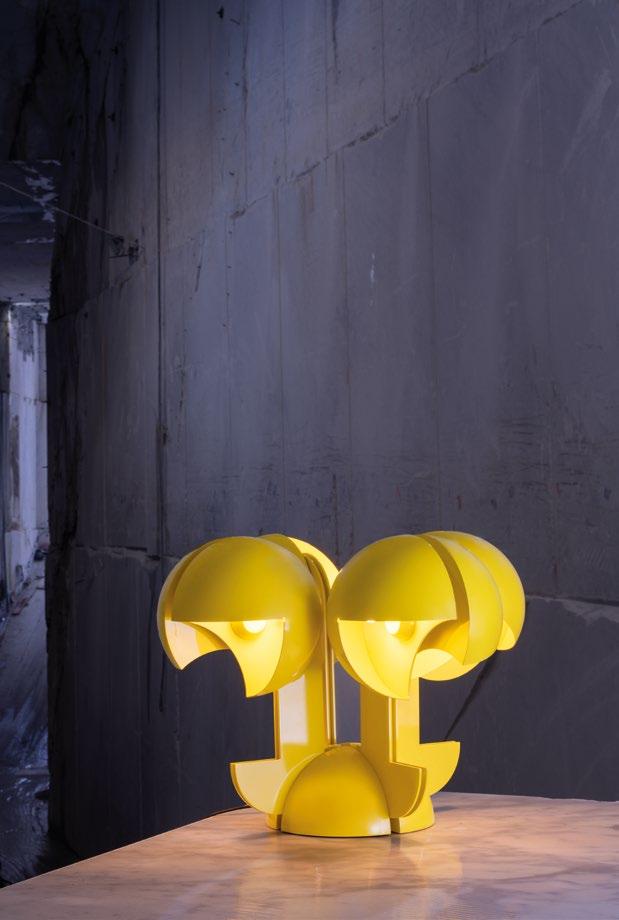
He has always dealt with issues related to architecture, interior and industrial design. After graduating in Architecture from the Politecnico di Milano, he was Assistant Professor of Interior Architecture for five years. Numerous are his projects and realisations, of architecture, interior design and exhibition design both in Italy and abroad. Many of his works have been published in magazines and books all over the world.
Asti is one of the founders of ADI. He has been a member of various ADI Executive Committees and Working Commissions and has taught courses on industrial design at the Higher Institute of Art in Venice and abroad at the Experimental Higher Institute of Shizuoka Prefecture, Japan. He has held numerous conferences around the world (France, Germany, Portugal, United States, Japan, China, India, Thailand) and in Italy. He has participated as a judge in architecture and industrial design competitions. He has collaborated with various important companies in sectors ranging from furniture to lighting, from Radio-TV to glass.
He has received many awards: from the Triennale to the Compasso d’Oro, from the M.O.M.A. in N.Y. to the French and Japanese Ministries of Industry and Trade, and the BIO exhibition in Lubljana. He has been invited on several occasions to hold group and solo exhibitions: in Italy, Canada, the United States, Japan, Germany, the Netherlands, Sweden, Denmark, Brazil and France. Many objects designed by Sergio Asti can be found in the collections of major museums and private collections. Martinelli Luce paid tribute to Asti—who passed away in 2021—with the re-edition of the Visiere table lamp.


“In the field of industrial design, he was among the first in the 1950s to tackle the new subject matter.”


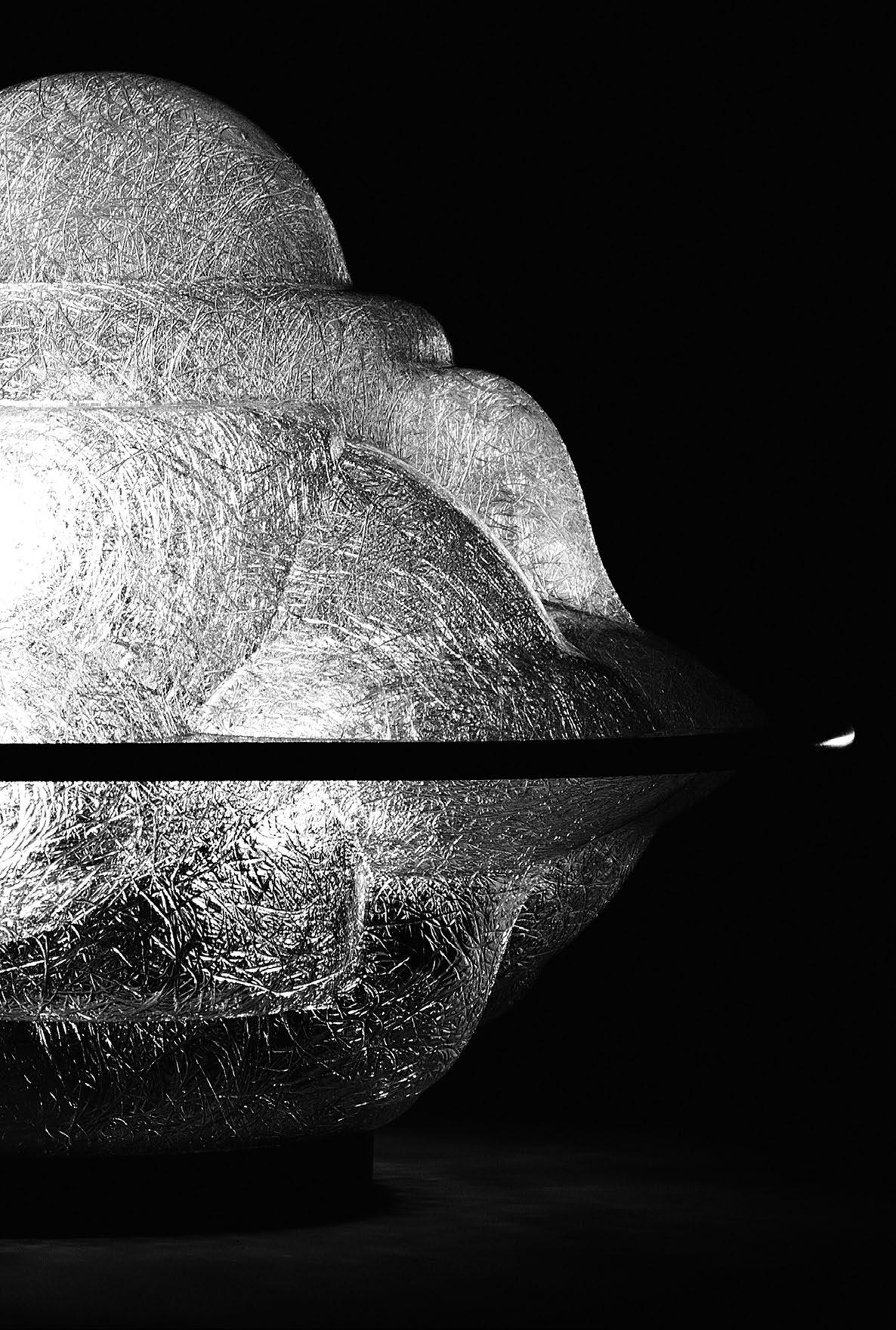
“Design lives through reason, rigor and constant self-criticism, but also through intuition, and the physical sensation and emotions aroused in us by looking and touching (and, of course, using). It also works in ancient and occasionally mysterious ways, as when, in really foreign countries, you sometimes encounter silences, gestures, symbols and objects that watch you like old friends and come to your aid.”
Her favourite hobbies are photography, graphics, and painting. She always carries a notebook and pencil with her to draw and capture the fleeting moment of an expression, a shadow, or an effect that sparks her imagination.
Emiliana Martinelli studied ceramics at the Art Institute of Lucca and industrial design at the ISIA in Florence before graduating in architecture. After finishing her studies, she immediately joined the family business, Martinelli Luce. This is how Emiliana’s design career began.
A long collaboration with her father, Elio, with whom she created the products that have distinguished her production over time. Emiliana is the president of Martinelli Luce and serves in a variety of roles within the company, including entrepreneur, designer, and art director. She manages the company’s exhibition stands and attends the most important industry events in Italy and abroad. She participates in training events for academies, industrial design institutes, and professional orders across the country. Many of the lamps she has designed for domestic and contract environments have received significant international recognition. Emiliana has collaborated with architects such as Gae Aulenti, Sergio Asti, Paolo Orlandini, and Marc Sadler, and she continues to work with prominent Italian and foreign designers. Her enthusiasm and knowledge of design have also led her to devote herself to young designers in order to pass on her passion for ‘designing’. This has allowed her to discover new talents and form collaborations that have resulted in the development and engineering of numerous projects that have won awards such as the ADI Design Index, the Compasso d’Oro, iF Product Design, the ADI Innovation Award, and many others.
Emiliana has a strong personality, is imaginative, enterprising, creative, and curious. She enjoys nature and geometry, round shapes, technology, and research. She enjoys manual skills, which she expresses through the use of paper and other materials to create lamps and other objects, as well as participating in various competitions. Finally, in the field of light, she curates light installations for a variety of occasions.


“I always design new lamps, and then take a step back to choose with a clearer mind, without getting carried away by enthusiasm.”




“Our objects reflect our deep appreciation of the materials we use to create them. When it comes to colour, we prefer to use integrally coloured materials, in which the colour penetrates to the very core of the object. Our paints are applied in textured layers, lending the designs a natural radiance.”




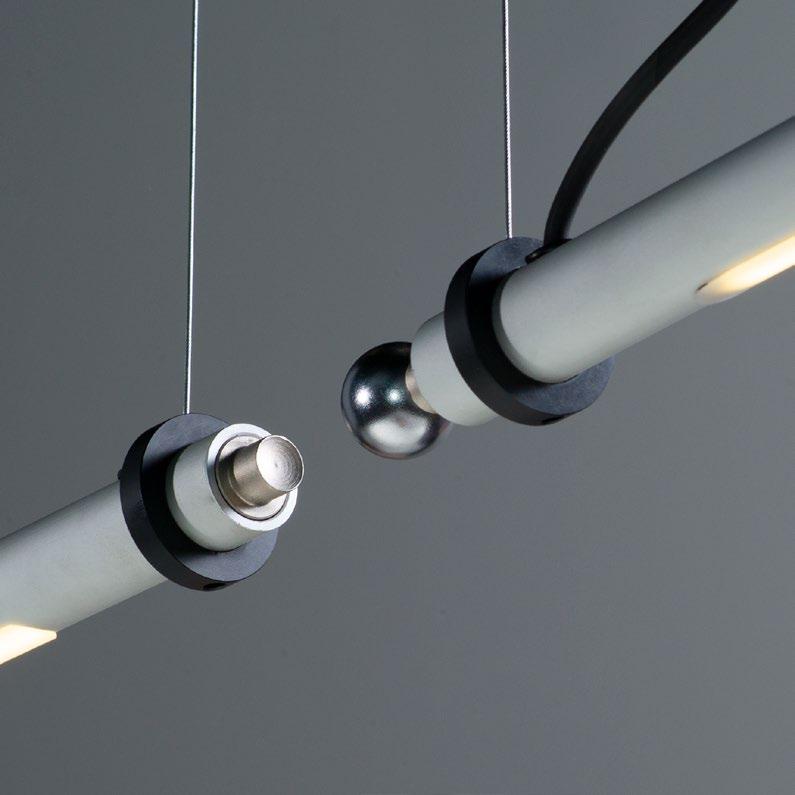

He is an Italian industrial designer. After graduation from the Politecnico di Milano and he began collaborating with architects, designers, companies and professional artisans in the design field.
Grew up and trained in the heart of Brianza, he has a strong connection to his local territory, combined with a cosmopolitan sensitiveness acquired during an additional experience in the United States. Upon his return to Italy, established his own firm, Brian Sironi Design Studio.
In his work, he focuses on the connection between object and user, shape and function, while aiming for form at its purest. His purpose is to improve people’s daily life, even in few details, or in single gestures, on a small scale, adding something extraordinary and unexpected in every object.
In 2010 he is selected for the exhibition ‘The New Italian Design Reloaded’ at Triennale di Milano museum, the exhibition is currently traveling in different cities of the world.
He receives prestigious awards: ‘Design dello Stupore’ in Young & Design contest (2009) Honorable Mention in I.D. Annual Design Review (2010), IF Gold Award (2010), Good Design Award (2011 e 2012), Red Dot Design Award (2011). His most important project is Elica lamp manufactured by Martinelli Luce, awarded with ADI Compasso d’Oro in 2011.
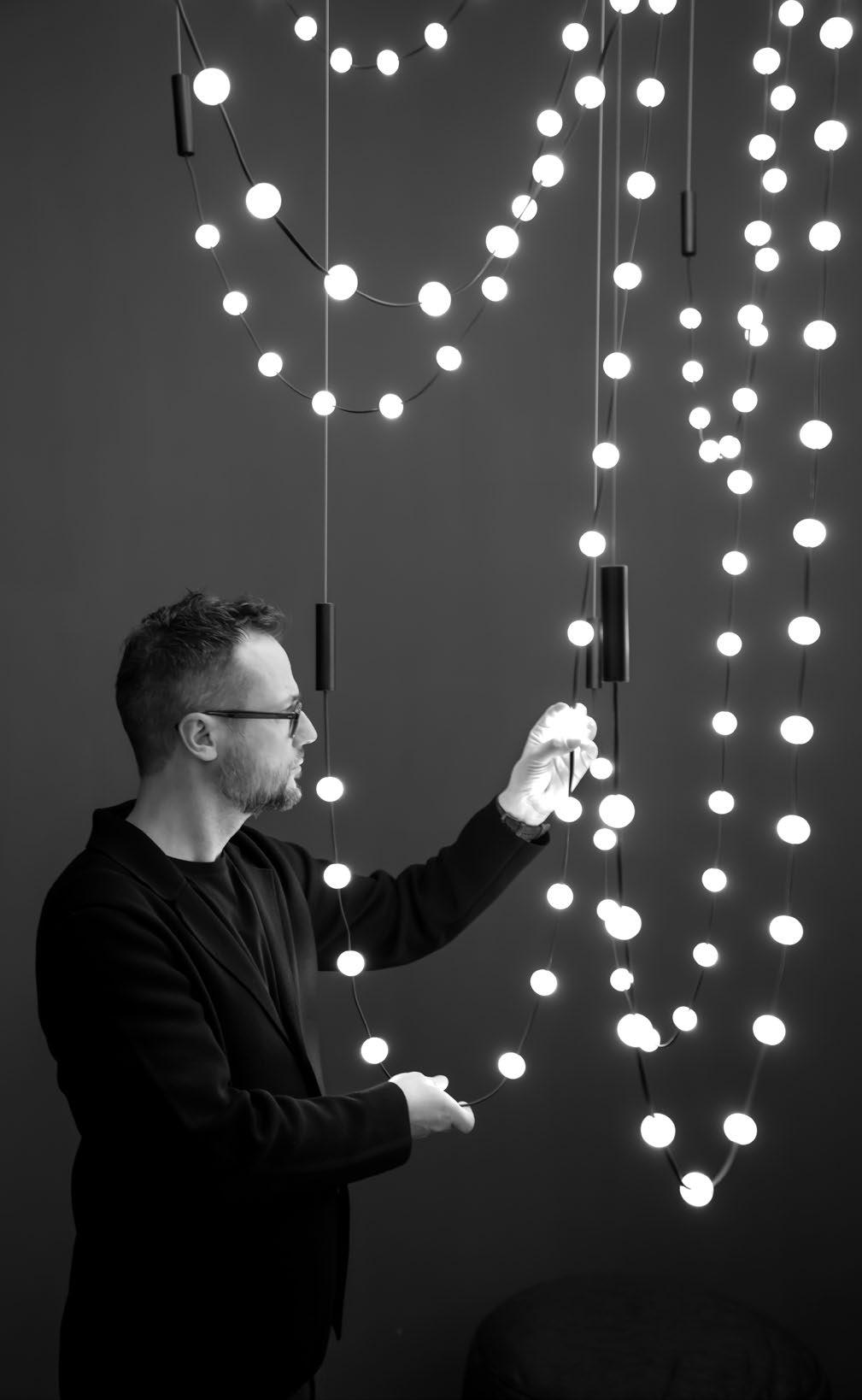
“Elica was born from observing people’s habits, from a reflection on a simple gesture like turning on a lamp.”


“Often my projects arise from an empathic design principle: I think first of the users, their daily life, their habits, rituals and gestures, and the lamps also follow this process. Elica was born from a reflection on the gesture of lighting. In designing a lamp, the context of use is fundamental, because from here a new routine is generated that characterises the user’s everyday life. Another fundamental element is technology, a factor that influences the design from the very beginning and directs the entire process, helping to define the shape, colour and performance of the lamp itself.”

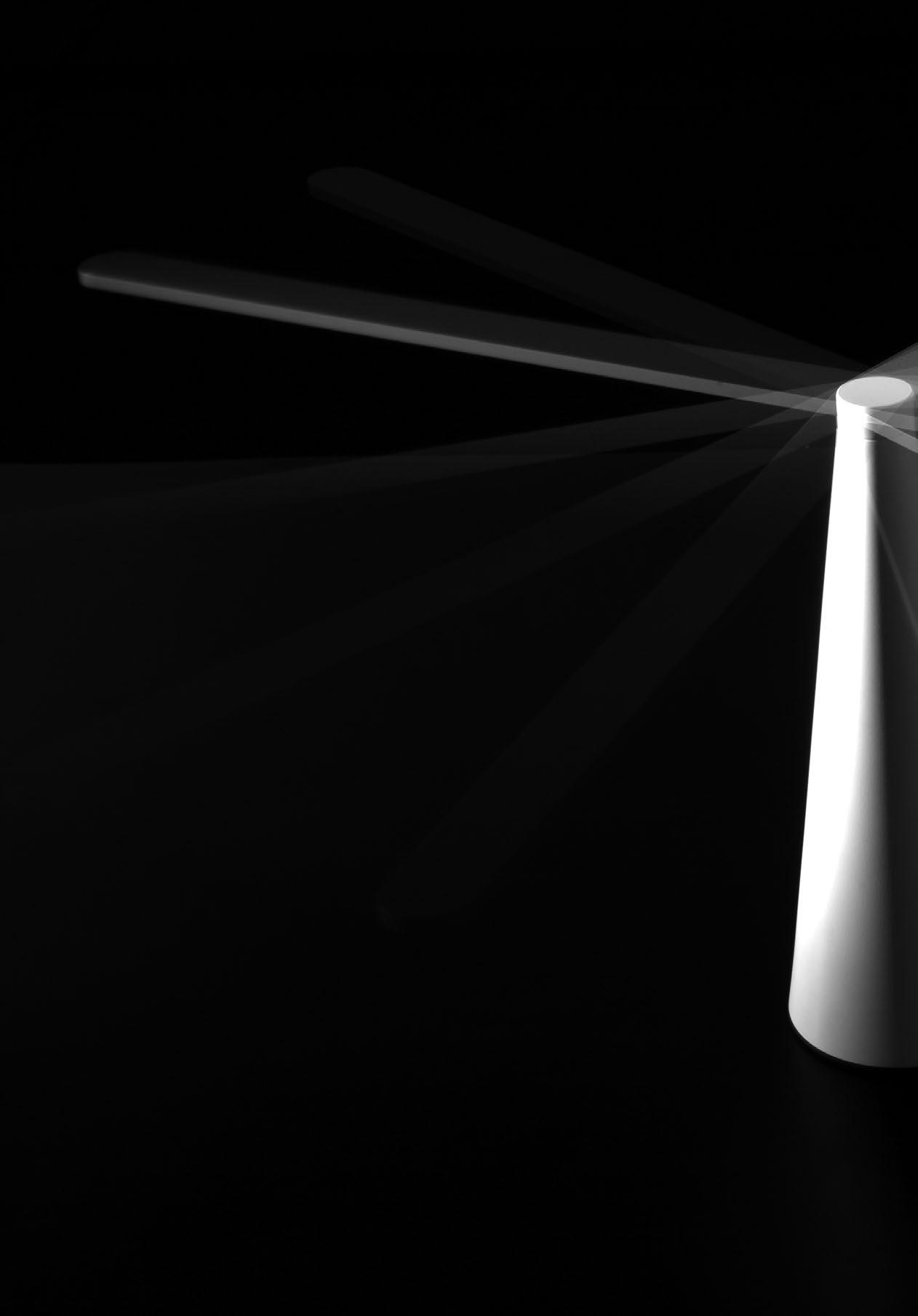

“I would say that invention is one of the main components of my creative process: I follow it constantly, favoring in particular the small but amazing inventions, made a bit ‘on the edge of the archetypal categories of objects. I like when it is practical and useful: in the utility of things there is a poem that I try to reveal in all of my projects. That’s why the other important element is the imagination: seeing the future, predicting scenarios, are narrative moments in which it’s easy to enroll my projects, the use of my items, the daily lives of people.”
Innocenzo Rifino and Diego Rossi, after several years of independent professional experience between Italy and Japan developing robotics, lighting and interaction design projects, founded Studio Habits in 2004. Over the years the Studio has expanded its professional experience in different industrial areas, developed co-operations in various parts of the world and followed projects of global relevance. The work largely focuses on digital products, IoT and smart objects, home automation, household appliances and lighting.
Studio Habits has implemented a design method based on the rapid transition from ideas to prototypes, according to a continuous and concrete cycle that leads to a consistent representation and definition of the design idea. It has collected over 100 international design awards, including the Red Dot, IF, Good Design, Design Plus, German Design Award, ADI Compasso d’Oro.
A design methodology focused on the quick conversion of concepts into prototypes has been put into place by Studio Habits, following a continuous and tangible cycle that results in a uniform representation and definition of the design idea. The team consists of professionals from different and complementary backgrounds: industrial designers, electronic/mechanical engineers, modellers, interaction designers, visual designers, research designers.
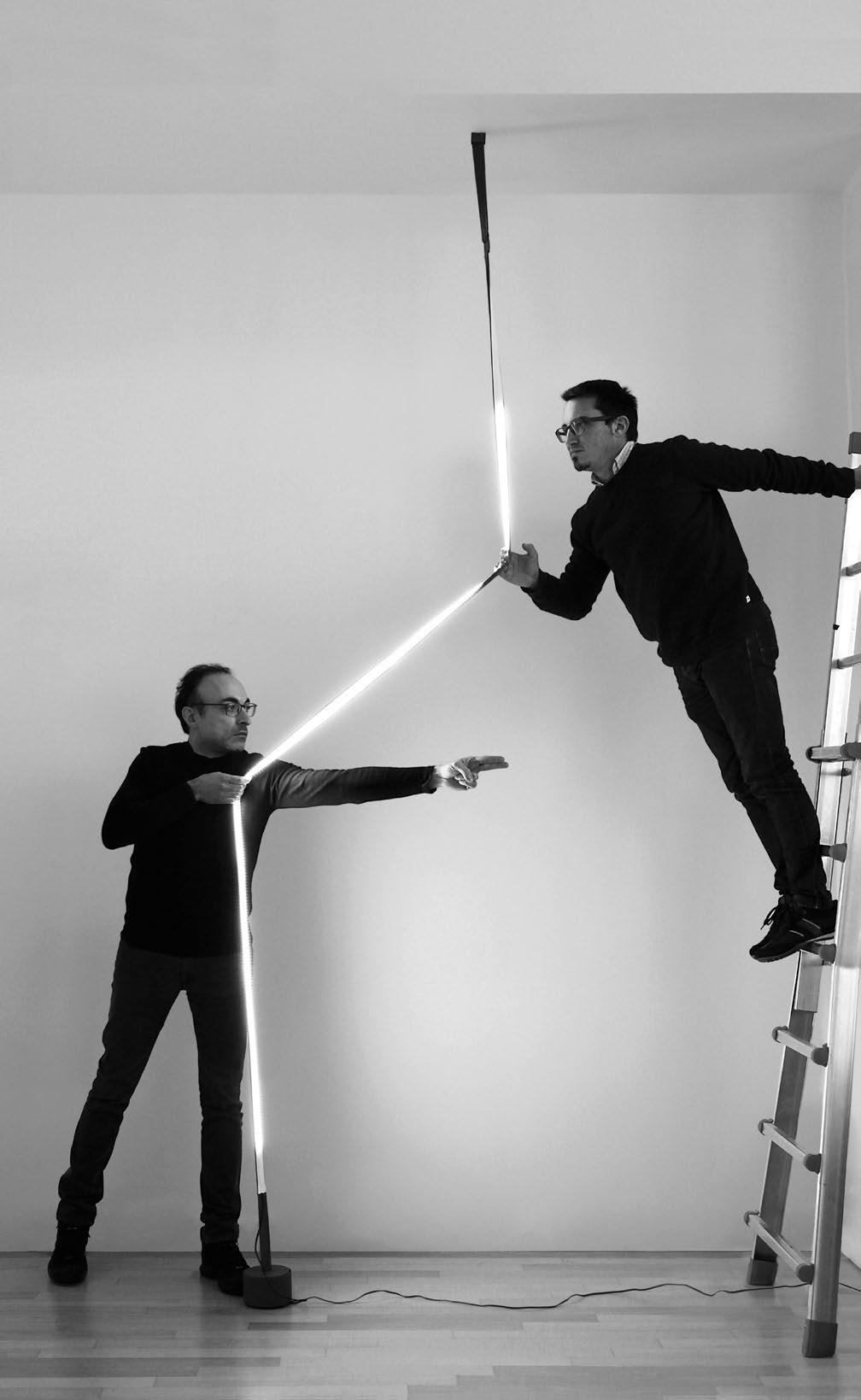
“Light is part of our design DNA. It was the very first area of design we approached. We found it fascinating—more than other, more traditional sectors of design in Italy—because it had a key technological component. Moreover, when you design a lighting fixture, final effect is as important as form. It’s a multi-layered project.”
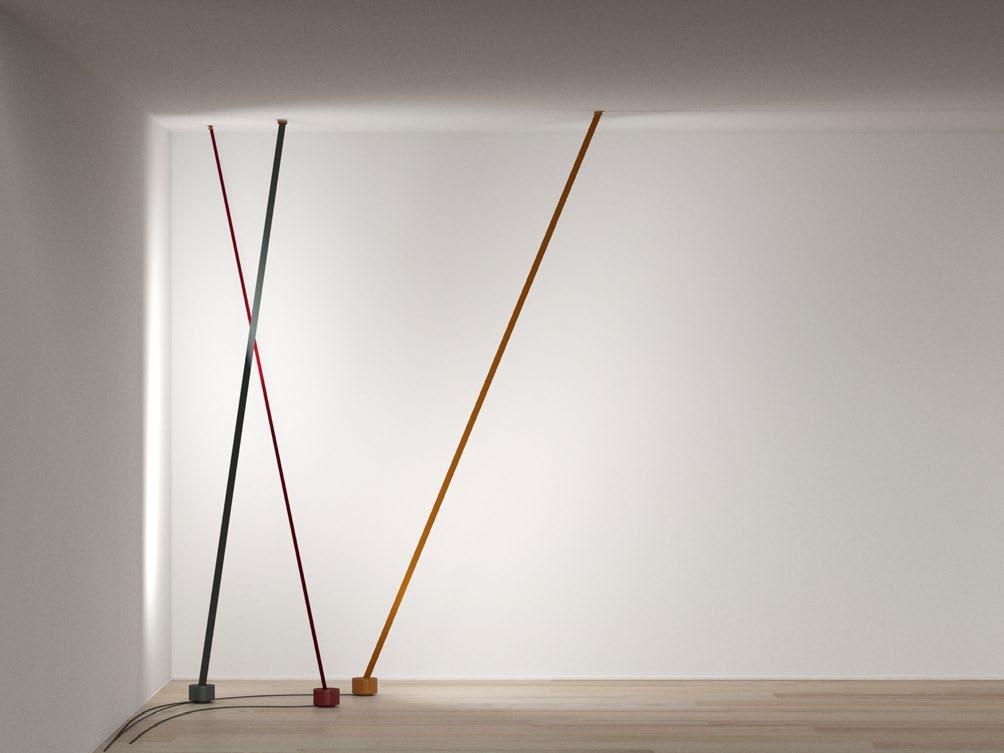

He was born in Arnsberg, Germany, called ‘the city of light’ in the 1930s. It was the place where the famous ‘Kaiser Idell’ lamp was produced and where most of the German lighting industry was located. He currently lives together with 11 artists, designers, musicians and craftsmen on the top floor of a 1970s office building in Hamburg. Simon uses light as a material element: it can be formed and guided. With shadow as a counterpart, light can highlight its surroundings and at the same time exclude them. In addition to being a designer and sculptor, he views himself as a puppeteer who can manipulate the strings of machinery that make up his works of art. His work has a distinctive mechanical movement about it. He wants to demonstrate his admiration for mechanical concepts by outlining how they operate, move, or behave. He wants people to have a conscious interaction with stuff by helping them comprehend how things work.

“I consider myself a designer, a sculptor, but above all a puppeteer capable of moving the strings of the mechanisms that make up my creations.”




“For me, lighting represents a particularly informal area in interior design. Lighting can function as a silent servant or become the centrepiece of the room. They have many different dimensions that you don’t find in a chair, for example. You can design them purely functionally or with a lot of artistic freedom. In my work, these two directions go hand in hand. The one conditions the other.”

Is a creative agency founded by Marco De Santi and Alessandro Paoletti. It springs from the combination of their two different yet complementary backgrounds—in industrial and graphic design—and their experience in product and space design as well as in publishing and web design. Different fields linked by one vision: design is an application of the creativity process. Studio Natural believes in the power of competence and that any creative and production process demands expertise and specific skills. Thus, Studio Natural can set up and provide a ad hoc team of professionals who will collaborate and contribute to the best result on any project.


“Light is undoubtedly the area of design that fascinates us the most. On one hand, there’s the continuous innovation in light sources, which pushes us to deepen our technological research. On the other, there’s the more romantic side—light as the element that reveals space and lets us decide what deserves to be seen.”

She is an architect and designer from Florence. A designer of architecture and interior design, for private homes, public spaces and installations, she works in Italy and abroad. Her work combines geometric abstraction, rigour, spatial play, attention to detail and monochromaticism, creating a harmonious relationship between light, objects and space, identified by the strong iconography of her sign.
She has participated in numerous national and international exhibitions and competitions. Her project entitled ‘A Building for Worship’ was published by the Faculty of Architecture of the University of Florence; selected in 1991 by the Department of Design for the Salon International de l’Architecture in Paris, the project was also exhibited in the same year at the Milan Architecture Fair and, in 1992, at the Milan Triennale. As an expert in the Subject, she coordinated seminars at the Faculty of Architecture of the University of Florence within the course of Interior Design and Architecture between 1990 and 1996.
Since 2007 she is a member of the Italian Design Council (CID), an advisory body of the Ministry of Cultural Heritage and Activities. In 1990 she was one of the winners in Alessi’s ‘Memory Containers’ competition, becoming a designer for the brand on an ongoing basis and having produced thirty objects in the catalogue since then.


“A combination of geometric abstraction, rigour, spatial play and monochrome.”

Idealistic and prolific, today he is one of the most original voices in design. Over 4000 projects in the pipeline, around 300 awards to his name, and work for clients in over 40 countries. Karim’s ability to go beyond typologies makes him a force among the designers of his generation. Karim’s projects include luxury goods for Christofle, Alessi, and Veuve Clicquot; democratic products for Umbra, Bobble, and 3M; timeless furniture for Bonaldo, Tonelli, BoConcept, and Vondom; fine lighting systems for Artemide and Fontana Arte; high-tech products for Asus and SirinLabs; surface design for Marburg and Abet Laminati; iconic graphics for Citibank and Sony Ericsson; and award-winning packaging for Method, Paris Baguette, Kenzo, and Eos.
Karim’s influence also includes restaurants such as Amoje Food Capital in South Korea, including hospitality design for nhow Hotel Berlin and hotels for Prizeotels in Bremen, Hamburg and Hanover, the Università metro station in Naples, and commercial design for Fun Factory in Berlin and Munich. He has collaborated on countless design exhibitions for clients such as Dupont Corian, Deutsche Bank, PepsiCo, and Audi. In 2017 Karim launched KURV Architecture D.P.C. with Alex Hughes AIA as his partner, providing a unique multidisciplinary approach to architecture, investment and development. He has won the Red Dot award several times, the Chicago Athenaeum Good Design award, the Pentawards, and the IDSA Industrial Design Excellence award. He holds honorary degrees from Carlton University, Pratt Institute, OCAD in Toronto, the British Institute of Interior Design, and Corcoran College of Art & Design.
His works are held in 20 permanent collections at various art institutions around the world, including the Brooklyn Museum of Art, MoMA, and the Center Pompidou. He has exhibited worldwide and is a frequent external contributor to the Venice Biennale. A shaper of culture, Karim is a frequent guest speaker at university conferences worldwide, with aspirations to change the world by making design a subject in the public domain. He is frequently featured in digital platforms and print media such as CNN, Vogue, Elle, GQ, the New York Times, and many others.

“Colour is one of the most beautiful phenomena of our existence. Colour is life and, for me, it is a way to get in touch with emotions, with the psyche, with our spiritual side. I believe that colour is today cross–cultural, omnipresent and universal.”


by Louis De Belle

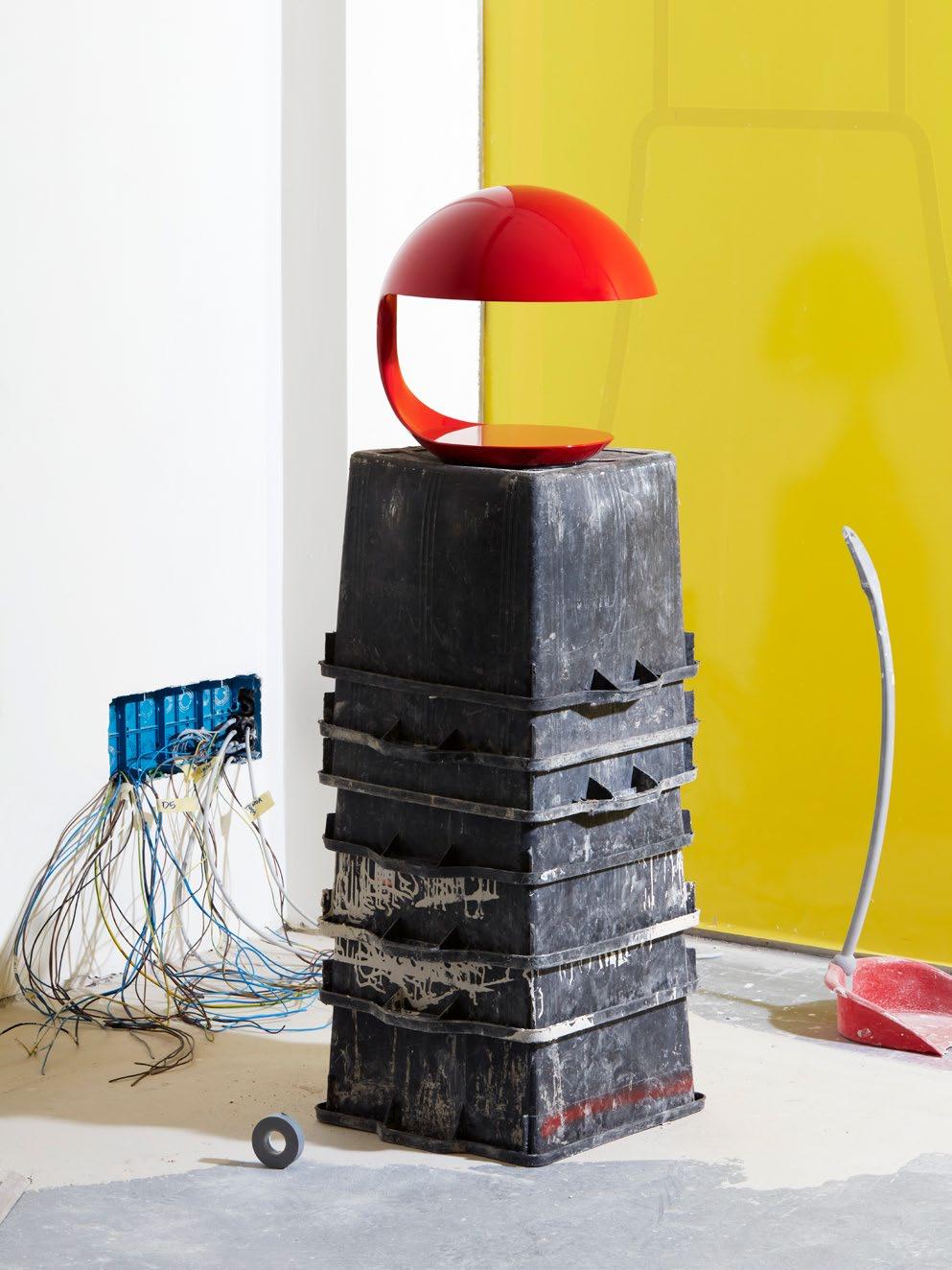




Martinelli Luce
Design by Tomo Tomo
Illustration by Emiliana Martinelli
Printed in April 2025 by Grafiche Aurora, Verona, Italy
Martinelli Luce Spa Società Unipersonale
Via Teresa Bandettini
55100 Lucca (Lu) - Italia
Tel. +39/0583.418315 info@martinelliluce.it
Showrooms:
Via S. Lucia, 9
55100 Lucca (Lu) - Italia
Tel. +39/0583.496254 showroom@martinelliluce.it
Via Borgogna, 4
20122 Milano (MI) – Italia
Tel. +39/02.35945668 showroom-milano@martinelliluce.it
Adolini+Simonini Associati
Andrea Menchini
Angelo Micheli
Antonio De Marco
Area-17 Architecture & Interiors
Atelier(s) Alfonso Femia
Bellucci Mazzoni Progetti
Brian Sironi
Daniele Balzanelli
Davide Frattini Frilli
Donia Maaoui
Elio Martinelli
Emiliana Martinelli
Francesco Lucchese
Gae Aulenti
Gianfranco Rollo
Karim Rashid
Lella & Massimo Vignelli
Luc Ramael
Marcello Morandini
Marc Sadler
Marco Pisati
Marco Ghilarducci
Massimo Farinatti
Marta Sansoni
Michel Boucquillon
Michael Geldmacher
Nicolas Verschaeve
Neil Poulton
Paola Navone
Orlandini Design
Peluffo & Partners
Richard Neutra
Roberto Lucci Paolo Orlandini
Serge & Robert Cornelissen
Sergio Asti
Simon Schmitz
Studio 4P1B
Studio Emmepi
Studio Foa
Studio Habits
Studio Lucchi & Biserni
Studio Natural
Studio PLS Design
Studio Tecnico ML
Studiòvo
Studio Martinelli–Venezia
Yonoh Studio Creative
